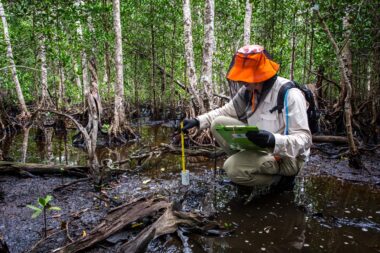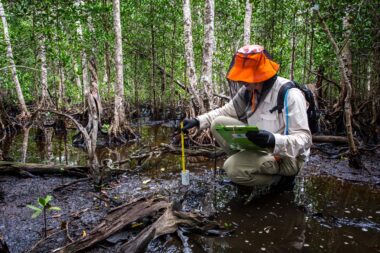Battery storage is booming. According to a study by Frontier Economics, the volume of grid-connected storage in Germany alone could increase to 60 gigawatts (GW) or 271 gigawatt-hours (GWh) by 2050. This is forty times the current storage capacity. Similar dynamics in cost reduction and installation speed are expected as seen with photovoltaics (PV) in recent years. Soon, battery storage will fundamentally change energy supply. The latest technologies, trends, and market developments will be showcased at ees Europe, Europe’s largest and most international exhibition for batteries and energy storage systems. It will take place from June 19 to 21 as part of The smarter E Europe, Europe’s largest alliance of exhibitions for the energy industry, in Munich. Around 3,000 exhibitors and over 115,000 visitors from around the world are expected in 19 exhibition halls and an outdoor area.
This press release features multimedia. View the full release here: https://www.businesswire.com/news/home/20240604806032/en/

Innovations in the field of large-scale storage can be seen at this year’s ees Europe. (Photo: Business Wire)
The growth of grid-connected storage brings enormous advantages to the energy system and offers economic benefits. The expansion of large-scale storage can significantly reduce the need for new gas power plant investments in Germany by up to 9 GW. This expansion also contributes significantly to reducing CO2 emissions. The key point: this growth is purely market-driven and does not rely on government subsidies.
Short-term storage enables system transformation
Battery storage increasingly assumes critical roles in ensuring a reliable power supply and stabilizing power grids. Large battery storage systems ensure voltage control, provide immediate reserve capacity, and facilitate black start capability, playing a part in congestion management. They can balance fluctuations in the grid within seconds and store energy for hours or days. The black start capability of storage systems is crucial in emergencies.
Moreover, storage systems can mitigate the effects of delayed grid expansion. They help optimize the utilization of the limited grid infrastructure, allowing more facilities to be connected. This enables more capacity and additional PV installations despite limited grid connection capacity. Another benefit: battery storage increases the market value of renewable energy. Green electricity can be stored when market prices are low and fed into the grid when demand is high and electricity prices are correspondingly high.
International storage revolution
Worldwide, exponential growth in battery storage is evident. Experts predict that global production capacity will rise to 500 GWh per year by 2025. In markets such as Australia, the USA, and India, tenders for new wind or solar capacities have been coupled with storage for years. In Germany, the speed of expansion and the installed storage capacity are still modest. However, this year, battery storage systems in Germany will surpass pumped storage systems in installed capacity for the first time.
Setting the right framework
To make stationary storage of all sizes attractive, a favorable market environment and simple regulations are needed. Market-driven expansion must continue to be enabled and improved. Modern framework conditions for battery storage should be set through reforms in grid fees, flexible electricity tariffs, or the introduction of contracts for difference.
ees Europe
Every year, ees Europe, Europe’s largest and most international exhibition for batteries and energy storage systems, provides a networking opportunity for the industry’s key players – all under the motto “Innovating Energy Storage”. It focuses on the latest technologies, trends and market developments. ees Europe will take place from June 19–21, 2024 as part of The smarter E Europe at Messe München.
For more information: www.ees-europe.com
View source version on businesswire.com: https://www.businesswire.com/news/home/20240604806032/en/
Contact details:
ressourcenmangel an der Panke GmbH
Roberto Freiberger
[email protected]
Solar Promotion GmbH
Peggy Zilay
[email protected]



